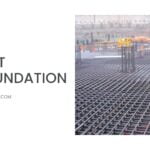
The Ultimate Guide to Sustainable Living in the US
As the world grapples with the challenges of climate change, environmental degradation, and social inequality, the importance of sustainable living has never been more pressing. In the United States, where consumption and waste have long been ingrained in the culture, making sustainable choices can seem daunting. However, with a growing awareness of the need for eco-friendly practices, Americans are increasingly seeking ways to live more sustainably.
What is Sustainable Living?
Sustainable living refers to a lifestyle that minimizes an individual’s or society’s use of the Earth’s natural resources, and personal resources. It is a way of living that meets the needs of the present without compromising the ability of future generations to meet their own needs. Sustainable living involves making conscious choices about the food we eat, the products we buy, the energy we use, and the waste we generate.
Benefits of Sustainable Living
The benefits of sustainable living are numerous and far-reaching. By adopting sustainable practices, individuals can:
Reduce their carbon footprint: One of the most significant advantages of sustainable living is the reduction of greenhouse gas emissions. By using public transport, carpooling, or driving electric or hybrid vehicles, individuals can significantly decrease their carbon footprint.
Save money: Sustainable living often involves reducing consumption and waste, which can lead to significant cost savings. Buying in bulk, using energy-efficient appliances, and canceling subscription services can all contribute to a more sustainable and cost-effective lifestyle.
Improve their health: A sustainable lifestyle often involves eating a balanced diet rich in whole foods, fruits, and vegetables. This can lead to improved physical and mental health, as well as a reduced risk of chronic diseases.
Support local communities: Sustainable living often involves supporting local businesses, farmers, and artisans. This can help to boost the local economy, promote community development, and preserve traditional skills and knowledge.
Pillars of Sustainable Living
Sustainable living is built on several pillars, including:
Environmental Sustainability
Environmental sustainability involves reducing our impact on the natural world. This can be achieved through:
- Reducing energy consumption
- Conserving water
- Reducing waste
- Using eco-friendly products
- Protecting biodiversity
Social Sustainability
Social sustainability involves promoting social justice and human rights. This can be achieved through:
- Supporting fair trade practices
- Promoting diversity and inclusion
- Encouraging community engagement
- Advocating for human rights
- Addressing poverty and inequality
Economic Sustainability
Economic sustainability involves promoting economic growth while minimizing negative environmental and social impacts. This can be achieved through:
- Supporting sustainable businesses
- Investing in renewable energy
- Encouraging sustainable agriculture
- Promoting eco-tourism
- Implementing sustainable infrastructure
Sustainable Food Systems
The food system is a significant contributor to environmental degradation, deforestation, and greenhouse gas emissions. Sustainable food systems involve:
Local and Seasonal Eating
Eating locally and seasonally can help to reduce carbon emissions, support local farmers, and promote food security. By choosing produce that is in season, individuals can reduce their carbon footprint and enjoy fresher, more flavorful food.
Organic and Regenerative Agriculture
Organic and regenerative agriculture involves farming practices that prioritize soil health, biodiversity, and ecosystem services. This approach can help to sequester carbon, reduce synthetic fertilizers and pesticides, and promote more resilient food systems.
Reducing Food Waste
Food waste is a significant problem in the US, with an estimated 40% of food produced going uneaten. By planning meals, using up leftovers, and composting food scraps, individuals can reduce their food waste and contribute to a more sustainable food system.
Sustainable Energy and Transportation
The way we produce and consume energy has a significant impact on the environment. Sustainable energy and transportation involve:
Renewable Energy
Renewable energy sources, such as solar and wind power, offer a cleaner alternative to fossil fuels. By investing in renewable energy, individuals can reduce their reliance on fossil fuels and contribute to a more sustainable energy system.
Energy Efficiency
Energy efficiency involves reducing energy consumption through the use of energy-efficient appliances, insulation, and smart home technologies. By reducing energy consumption, individuals can lower their energy bills and contribute to a more sustainable energy system.
Electric and Hybrid Vehicles
Electric and hybrid vehicles offer a cleaner alternative to traditional gasoline-powered vehicles. By switching to electric or hybrid vehicles, individuals can reduce their carbon footprint and contribute to a more sustainable transportation system.
Sustainable Home and Garden
The way we design, build, and maintain our homes and gardens has a significant impact on the environment. Sustainable home and garden practices involve:
Green Building
Green building involves designing and constructing buildings that are energy-efficient, sustainable, and environmentally friendly. By incorporating green building practices, individuals can reduce their energy consumption and contribute to a more sustainable built environment.
Sustainable Gardening
Sustainable gardening involves using eco-friendly practices, such as composting, mulching, and using native plants. By adopting sustainable gardening practices, individuals can reduce their environmental impact and create a more resilient and biodiverse garden.
Conclusion
Sustainable living is a journey, not a destination. By making conscious choices about the food we eat, the products we buy, the energy we use, and the waste we generate, individuals can contribute to a more sustainable future. While the challenges are significant, the benefits of sustainable living are numerous and far-reaching. By working together, we can create a more sustainable, equitable, and resilient world for future generations.
Getting Started with Sustainable Living
Getting started with sustainable living can seem overwhelming, but it doesn’t have to be. Here are some simple steps individuals can take:
- Conduct an energy audit of your home to identify areas for improvement
- Start a compost bin to reduce food waste
- Switch to energy-efficient light bulbs
- Invest in a reusable water bottle
- Begin a sustainable gardening project
Resources for Sustainable Living
There are many resources available for individuals looking to live more sustainably. Some recommended resources include:
- The United States Environmental Protection Agency’s (EPA) sustainable living guide
- The Department of Energy’s energy efficiency resources
- The National Renewable Energy Laboratory’s renewable energy resources
- Local sustainable living groups and organizations
The Future of Sustainable Living
The future of sustainable living is exciting and rapidly evolving. As technology continues to advance and costs decline, sustainable living is becoming more accessible and affordable. Some trends to watch in the future of sustainable living include:
Increased Adoption of Renewable Energy
Renewable energy is becoming increasingly cost-competitive with fossil fuels. As the technology continues to advance and costs decline, we can expect to see increased adoption of renewable energy sources.
Growing Demand for Sustainable Products
Consumers are increasingly demanding sustainable products and services. As the market continues to respond to this demand, we can expect to see more sustainable products and services become available.
Electrification of Transportation
The transportation sector is undergoing a significant transformation, with electric vehicles becoming increasingly popular. As the technology continues to advance and costs decline, we can expect to see increased adoption of electric vehicles.
Conclusion
Sustainable living is a critical component of a more sustainable future. By making conscious choices about the food we eat, the products we buy, the energy we use, and the waste we generate, individuals can contribute to a more sustainable world. While the challenges are significant, the benefits of sustainable living are numerous and far-reaching. By working together, we can create a more sustainable, equitable, and resilient world for future generations. What is Sustainable Living?
What is Sustainable Living?
Sustainable living refers to a lifestyle that minimizes an individual’s or society’s use of the Earth’s natural resources, and personal resources.
Why is Sustainable Living Important?
Sustainable living is important because it helps to reduce our impact on the environment, conserve natural resources, and promote social justice.
What are the Benefits of Sustainable Living?
The benefits of sustainable living include reducing carbon footprint, saving money, improving health, and supporting local communities.
What are the Pillars of Sustainable Living?
The pillars of sustainable living include environmental sustainability, social sustainability, and economic sustainability.
How Can I Reduce My Carbon Footprint?
You can reduce your carbon footprint by using public transport, carpooling, driving electric or hybrid vehicles, and reducing energy consumption.
What is Sustainable Food Systems?
Sustainable food systems involve local and seasonal eating, organic and regenerative agriculture, and reducing food waste.
How Can I Live More Sustainably at Home?
You can live more sustainably at home by reducing energy consumption, conserving water, reducing waste, and using eco-friendly products.
What are Some Simple Steps to Get Started with Sustainable Living?
Simple steps to get started with sustainable living include conducting an energy audit, starting a compost bin, switching to energy-efficient light bulbs, and investing in a reusable water bottle.
What are Some Recommended Resources for Sustainable Living?
Recommended resources for sustainable living include the EPA’s sustainable living guide, the Department of Energy’s energy efficiency resources, and local sustainable living groups and organizations.
What is the Future of Sustainable Living?
The future of sustainable living is exciting and rapidly evolving, with trends including increased adoption of renewable energy, growing demand for sustainable products, and electrification of transportation.
How Can I Support Local Communities through Sustainable Living?
You can support local communities through sustainable living by buying local, supporting fair trade practices, and promoting community engagement.
What is Green Building?
Green building involves designing and constructing buildings that are energy-efficient, sustainable, and environmentally friendly.
How Can I Make My Home More Energy Efficient?
You can make your home more energy efficient by using energy-efficient appliances, insulation, and smart home technologies.














